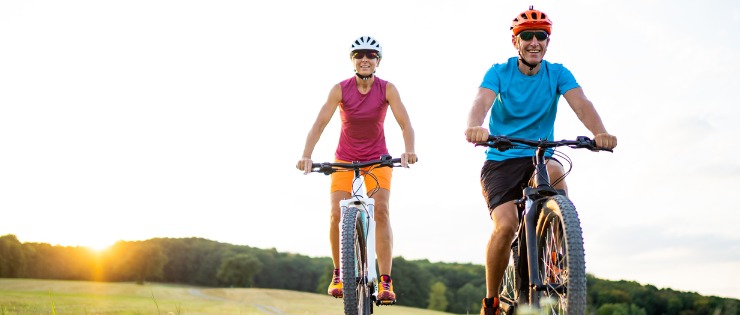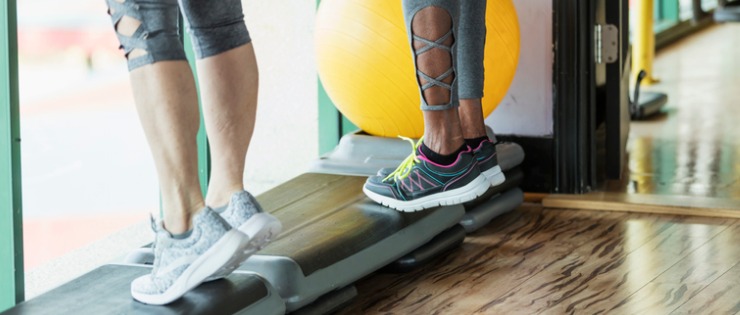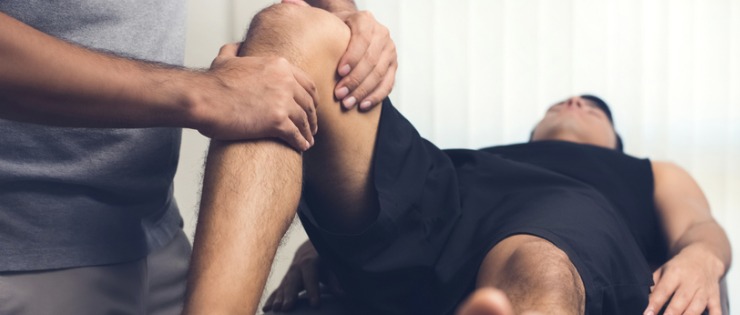
Many Australians say their bad knees are the bane of their life. Sore knees can range from dodgy to ‘bone on bone’. The discomfort or pain can affect the way you live your life. And it’s not just seniors struggling with the affliction. Sporting injuries and overuse can cause debilitating knee pain from early adulthood.
Bad knees can make it difficult to walk up and down stairs, pick up heavy objects, even walk for some. But don’t let your crook knees stop you from exercising.
A sedentary lifestyle can cause a range of other health conditions. If you choose the right exercise with reduced impact on the knees, the rest of your body can benefit without aggravating the problem.
Rather than giving up on any kind of a cardio workout after your running days are over, find an exercise that agrees with your knees.
#1 Swimming
When it comes to low impact exercise, swimming is a stand out. The water supports your body weight and allows your joints to move free of pain. The water gives you more mobility than you have on land.
You might need to choose a favourite swimming stroke depending on your knee problem. If you find frog kick difficult, give breaststroke a miss and try freestyle. Turning over after a while to do some backstroke will vary the muscles and ligaments getting a workout.

Even if you aren’t much of a swimmer, don’t let that deter you from enjoying the benefits of the water. You can use a kickboard or a pool noodle to help with your buoyancy in the water. Try the walking lane to strengthen and tone your leg muscles. Maybe give aquarobics a go and concentrate on the upper body exercises of the class. Whatever type of swimming you choose, you’ll be rewarded with burning plenty of calories and giving the major muscles including your abdominals, chest and glutes a good workout.
#2 Gym Workouts

Just because your knees are giving you trouble doesn’t mean you need to give up your gym membership. You might need to vary your workouts, but it will still deliver benefits. Running on the treadmill is hard on your knees, but you could slow the speed down and try walking.
A rowing machine allows you to exercise in the seated position so there’s less stress on your knee joints. It’s a good cardio workout and core strengthening exercise. Or you might have more success using an elliptical bike or cross trainer. But, if that’s difficult try to concentrate on upper body exercises. It’s a matter of carefully trying the equipment and seeing what works for you.
Lifting weights will get the blood pumping and help keep your arms and chest muscles toned. However, you don’t want to be lifting heavyweights from the ground because of the stress on your knees. Lift weights from the waist to the shoulder or while you’re in the seated or lying position, so there's little impact on the knee joints.
#3 Walking
We’ve all silently judged the person walking on the treadmill at the gym. But research shows that walking is an effective form of physical activity.
In the early days after an injury you can take it slow and steady and build up to faster, longer walks. Even speed walking is considered low impact for knees, so continue to build up speed if you can and benefit your entire body with a good workout.
#4 Cycling
Depending on your knee complaint, cycling can be a good cardio workout with little to no pressure on your knees. Because your feet aren’t on the ground cycling is a non-weight-bearing activity and lower impact than many other forms of exercise.

If you’re taking a ride outside, choose flat ground and make sure your seat is up high enough that your knees aren’t higher than your hips. If you prefer not to hit the roads, choose a stationary bike for your workout.
#5 Exercising from Home
If you’re not able to get out there and exercise or you’d prefer to start your climb back to recovery, you could try some home exercises.
Put on some music and limber up with these exercises. Remember to vary your home workout to keep things interesting.

Straight Leg Raises
A straight leg raise is ideal for keeping your quadricep muscle toned without straining your knees. It’s an ideal low impact workout for bad knees.
How to:
Lie on your back on the floor and bend one leg placing your foot flat on the floor. Keeping your other leg straight, raise it to the height of the bent leg. Repeat 10 times then swap legs.
Calf Raises
You don’t want to lose the strength in your calf muscles because you’ve had to reduce your exercise regime. Calf raises can help keep this important muscle in form.
How to:
Stand on a flat surface. Keep your ankles, feet, hips and feet in alignment then slowly lift your heels before lowering them. The slower you raise and lower them, the more difficult it is to do. Start with 25 reps to begin.

Partial Squats
Don’t let the word squats scare you off. You’re right in thinking squats aren’t ideal for bad knees, but partial squats are a different story. A full squat sees your thighs parallel to the floor while a partial squat requires your thighs to lower halfway between parallel to the ground and standing.
How to:
Begin with your feet shoulder width apart and your toes pointed forward. Pull in your abs and lower your upper body. Your knees should stay behind your toes throughout the exercise.
Step Ups
Steps ups are great for working your glutes, hamstrings and quad muscles. They may not seem like a low impact exercise, but if you're careful to do them correctly, your knee won’t be at risk of any further damage.
How to:
Stand at the bottom of a staircase stair bench. Place one foot flat on the bottom step and keep your knee in line with your ankle. Put the weight on the heel of your foot that’s on the step then lift your other foot to tap the step and floor. Do at least 10 repetitions then switch feet.
Seek Professional Advice About Your ‘Bad Knees’
It’s best not to self-diagnose your knee problem. It might seem like just a weak knee or minor knee pain to you, but it may need some expert medical attention to ensure it returns to full strength and mobility.
Many seniors resign themselves to weak knees and joints as a sign of old age. They learn to live with the discomfort and reduced mobility, but it’s worth seeking medical advice to find out what your options are to try and improve your knees.

Physiotherapist
You may get some relief from the pain by visiting a physiotherapist. They can diagnose the problem and give you low-impact exercises to do regularly to improve your movement and build strength.
GP
If your case of bad knees causes you chronic pain, see your GP. Your doctor may send you for scans to make a diagnosis and refer you to a specialist for further treatment. For some people, surgery can only improve their knee problem. No amount of rest or low impact knee exercises will help deteriorated knee joints.
But for others, doing a few low-impact exercises or workouts for bad knees might be enough to get back to exercising and enjoying a fully functioning knee.